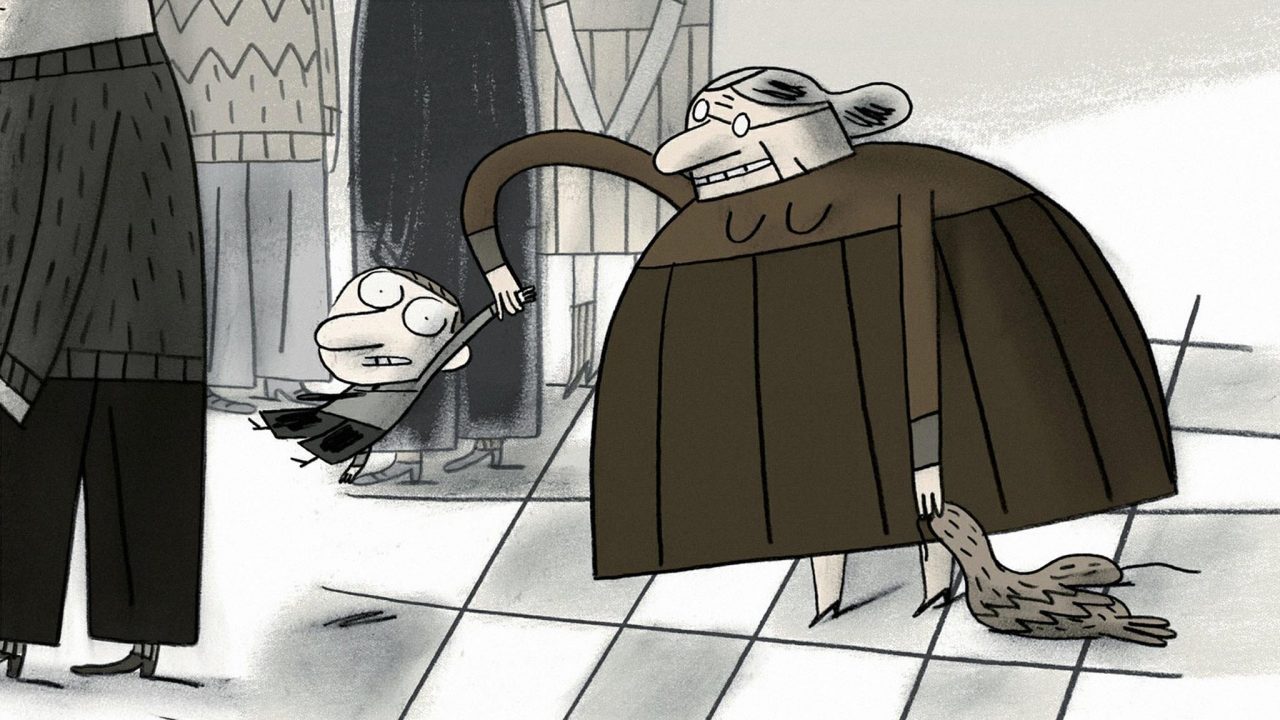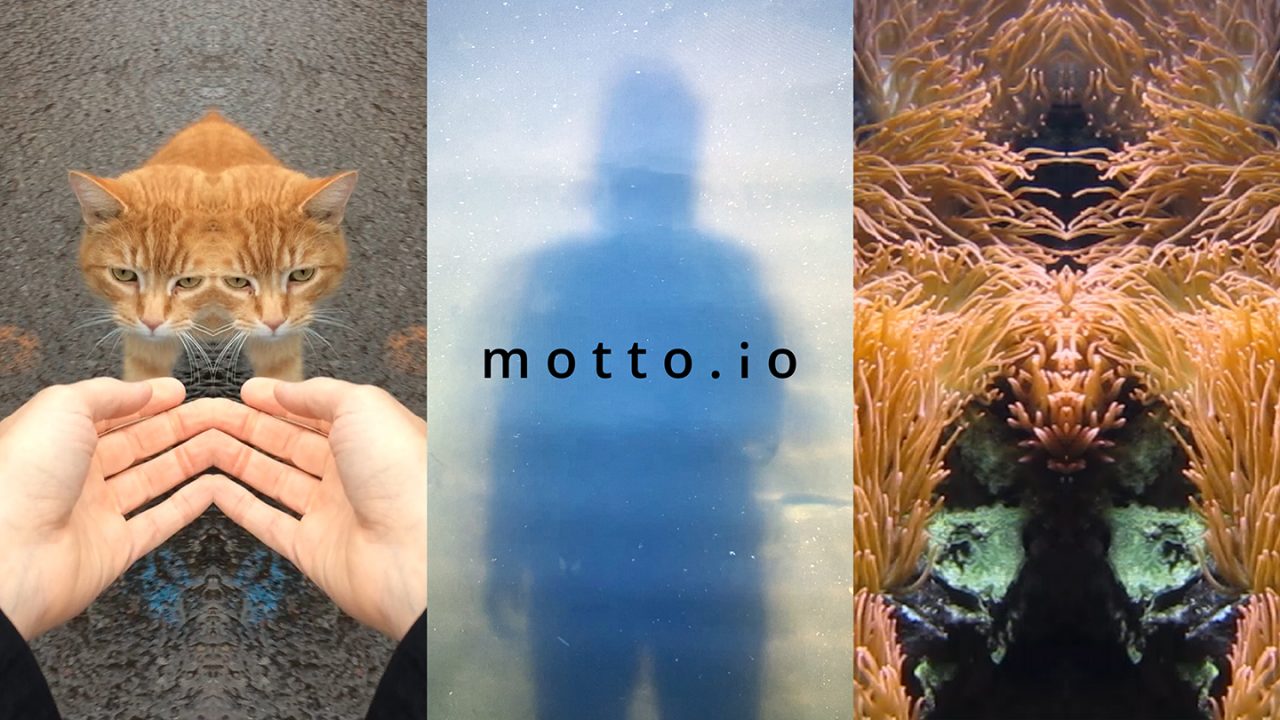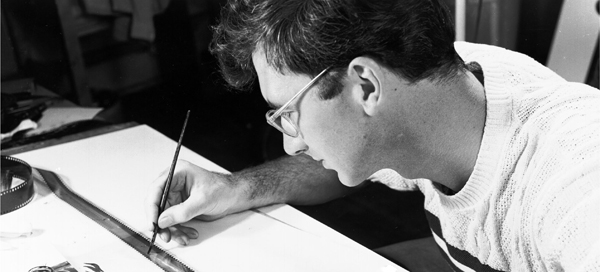
The NFB, Autism and Disability in the Classroom
The NFB, Autism and Disability in the Classroom
A proud father and Abitibi native, Martin Lejeune has been part of the NFB Educator Network since 2019. He taught at the high-school level for 17 years before working with children with intellectual disabilities and autism at Centre de services scolaire Marguerite-Bourgeoys. He is passionate about cinema and new media as ways to spark learning and reach kids who learn differently. Martin has written about some of his favourite NFB teaching resources and has presented at a conference. We couldn’t be prouder to collaborate with him and highlight his contributions in education.
For the past two years, I’ve been using some of the NFB’s interactive resources to enhance my students’ classroom activities. These autistic children, some of whom have intellectual disabilities, are between the ages of six and eight. They are boys and girls who express themselves either verbally or non-verbally using words, images (pictograms), signs and specific gestures in order to understand and to be understood. For them, daily routines can be a source of anxiety, and going to school becomes an essential factor in their development. Taking the bus, navigating the hallways, going to the washroom, using the microwave, hanging personal belongings in a locker, choosing the right school supplies, storing them in their desk, following a schedule, accepting the end of an activity, sharing toys, understanding the teacher’s instructions, dealing with the presence of others—these routine activities can easily upset the student and disrupt the group. In the classroom, students are called upon to experience structured activities adapted to each individual’s objectives, such as communicating and interacting with others in an appropriate manner.
These children become a little more independent by engaging in meaningful activities (making a sandwich), following examples (crossing the street), learning about appropriate social behaviours (challenging an adult), understanding and acting on relationships between individuals (waiting one’s turn), and observing what others do in class and then repeating it at home. This type of learning is supported by a variety of tools, means, approaches and strategies that are effective and also ensure the peace of mind, safety and well-being of the student.
Whether you use the NFB’s short films for an activity first thing in the morning, 15 minutes after lunch, for an entire period, or for one simple viewing, they can be an integral component of special education programs. Through trial and error, and by observing, modifying and adapting, I discovered the many virtues of the NFB site. The purpose of this blog post is to encourage you to test the effectiveness of these exercises in your own time, without making the mistakes that I did.
What works and doesn’t work for me
I screened a variety of interactive short films for my students on the interactive whiteboard: I Love Potatoes, OK Google, McLaren’s Workshop, BLA BLA (We apologize that BLA BLA is no longer available but please refer to our educational interactives and apps website where you’ll find other great resources for your classroom). These screenings were repeated, which means that I devoted two to five periods a week to this “work.” The students were blown away by the first film. Afterwards, they knew what to expect, and they showed their enthusiasm according to their own personal interests. From the above list of titles, BLA BLA was hands down the one my students loved the most. The interaction with the main character actively involves the students, which in turn motivates and engages them.

Imagine the scene: a one-minute hourglass in full view, patient students sitting however they like, waiting their turn. A student’s name is called out. He or she gets up, walks over to the large whiteboard and stares at the huge face of BLA BLA’s protagonist. Instinctively, they touch the screen, slide their finger across it and notice that the character’s eyes follow their movements. That’s all it takes for the child to start moving his finger around over the entire whiteboard, pressing it to make the character react by growing larger or shrinking, and listening to him babble and respond.
The other students follow this expressive face with curiosity. After a minute, it’s time for the child to go back to their place and let another student continue the experience. As I watch them trigger one on-screen surprise after another, I can see that something magical is happening. The students are developing certain skills and competencies and having fun at the same time. It’s very rewarding.

But don’t make the same mistake I did. It can take several viewings to spark interest, get students to concentrate and motivate them to work, and I sometimes put certain visual materials aside, thinking that students weren’t interested. These activities should be offered at different times of the day, and even of the month, to generate a reaction in individual students. Also, depending on age and prior learning, what may work with one student won’t necessarily work with another.
For example, younger students often find the McLaren’s Workshop app too complicated to use. On the other hand, older students (12 years and up) become especially enthusiastic about handling and creating their own film. You have to give the students time to process the information you present to them. This can take minutes, weeks or months. You need to be patient—but you already know all about that!
Interactive productions and social interactions
At my school, the CASP (Competency-Based Approach to Social Participation) Program is offered to students aged 6 to 11. The students’ positive reactions during my in-class screenings inspired me to incorporate these competencies into the program. Communicating, acting methodically and safely, interacting with others and using information effectively became objectives to be incorporated, developed and improved to ensure the emergence of these skills.
I targeted a number of social or autonomy-related concepts: waiting one’s turn, observing what others do, staying focused, being motivated, serving as an example, encouraging others, congratulating and applauding them, repeating new vocabulary and, ultimately, writing or copying words using that vocabulary. I’m saying “ultimately,” but in fact the final purpose could be to talk about the activity at home with Mom and Dad!
Using visual tools (pictograms, sequences) also allows the teacher to strengthen the bond of trust with the students while building their self-esteem. In fact, it’s all about communicating with the student without saying a word. The expression “A picture is worth a thousand words” takes on its full meaning here. I use a photo of the student instead of saying his or her name. I mime an action instead of saying the verb. I draw or designate a place instead of expressing it orally. This helps the students to know that they are understood, can be heard and can communicate in their own way. I adapt to the student, and not the other way around. When I speak, there are so many things for them to take into account—my facial expression, tone of voice, body movements—that it can interfere with their understanding. When I draw or show a picture, all it takes is that one piece of information to capture their attention. In the case of BLA BLA, all the information they have to process is embodied in a simple and amusing cartoon that’s easy for them to deal with. Seeing them smile, laugh and marvel at the reaction of the character on the screen gives us one more reason to do these kinds of activities: learning through play.
Want to give it a try?
When the new school year starts, I hope to make more discoveries after viewing more NFB projects. And I also hope that other teachers will take the time to visit the NFB’s site and appreciate the usefulness of the materials I’ve recommended. I’m sure that a lot of you are already using the Education section of NFB.ca, and I’d like to get to know you so that we can share our trials and our errors. In the end, our students are the ones who will benefit. There’s no point in reinventing the wheel when colleagues can point us in the right direction. The new post-pandemic reality for classrooms is also an opportunity for us to rethink the use of visual materials as learning tools. I’ll continue to recommend other exercises that I find to be effective, because all students can learn—one viewing at a time.
Martin lejeune is an educator and a father from the Abitibi region of Quebec. He has a BA in secondary-level education (French and History) and has been a secondary-school teacher for 17 years. He has been teaching specialized classes (for autistic children with and without intellectual disabilities) at the Centre de services scolaires Marguerite-Bourgeoys since 2014.
Pour lire cet article en français, cliquez ici.
Discover more Educational blog posts | Watch educational films on NFB Education | Subscribe to the NFB Education Newsletter | Follow NFB Education on Facebook | Follow NFB Education on Twitter | Follow NFB Education on Pinterest



